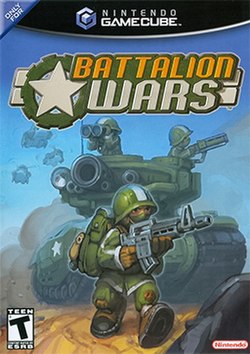Setting
The game's world consists of five nations, spread across two large continents and a series of islands and archipelagos. The western continent consists of a mixture of rugged canyons in the west and wide plains and forests, to frozen tundra and snowy mountains and forested valleys in the east. The continent is shared between the Western Frontier in the west, based upon the United States and whom the player controls throughout the campaign, and the Tundran Territories in the east, based upon Russia. The eastern continent consists of a desert province in the west, called the Dune Sea, and a large gothic-themed landscape in the east, which is home to the nation of Xylvania, a country based on a mixture of pre-World War I Germany, modern Romania, vampires, and Gothic themes. The southern seas consist of several islands, including a large archipelago to the south of the western continent, which is home to the Solar Empire, a nation based upon Japan with a mixture of traditional Japanese and high-tech futuristic themes.
Characters
The game's main protagonists are the commanding officers of the Western Frontier - General Herman, the leader of the Frontier forces; Colonel Austin, a resourceful officer; and Brigadier Betty, a young, energetic woman, whose uniform is based on a cheerleaders outfit. Leading the Tundran Territories are its officers - Tsar Gorgi, the country's former ruler who believes in strength; Marshall Nova, Gorgi's son and successor, devoted to modern progress and peace; and Major Nelly, an experienced female officer. Leading the Solar Empire is its ruler, Empress Lei-Qo - a wise woman with mystical powers. Their main antagonists are the commanding officers of Xylvania - Kaiser Vlad, the country's ruler; Kommandant Ubel, a hulking monster of a man; and Countess Ingrid, a devoted female pilot veteran.
Story
Following a previous war between the Western Frontier and Tundran Territories, both sides maintain an uneasy truce with each other, while maintaining a constant vigil of each other's forces at the demilitarized zone along their borders. General Herman, head of the Frontier's armies, agrees to a suggestion made by his subordinate, Brigadier Betty, to hold a military exercise for their troops to ensure they remain fit for duty. During the exercise, a recon scout spots several Tundran armored divisions invading their territories at the command of Tsar Gorgi. Having recently been succeeded by his son Marshal Nova as the country's new political and military leader, Gorgi despised the promise of peace between the two nations and decided to strengthen his nation's might by secretly invading and defeating the Frontier, effectively ending the truce between the two nations. Learning of his father's actions, Nova forbids Gorgi from participating further in the war he started, determined to end the conflict himself with his second-in-command, Major Nelly, leading Tundran forces.
As the Frontier forces begin to start winning the conflict, defeating Tundran forces in a series of battles, Gorgi travels to Xylvania, a country that had been ravaged by the rivalry of the two nations, to form a pact with its leader Kaiser Vlad. However, Vlad betrays him by having bombers, commanded by his subordinate Countess Ingrid, attack both armies. Horrified by this, Gorgi goes into exile out of shame for his actions. Weakened after the Xylvanian assault, both Herman and Nova call a ceasefire between their armies, effectively ending the conflict. Both nations decide to join forces, forming the Alliance of Nations, in order to retaliate against the Xylvanians as they prepare to attack both countries.
Seeking to weaken their enemies, the Alliance conducts operations within the Dune Sea, in order to prevent their enemies from drilling for nerocite, an essential resource used as vehicle fuel. Despite difficulties in their final battle, the Alliance is aided by Gorgi, after he comes out of exile to assist in the conflict in his own personal fighter. Although the Xylvanians are driven out for good, Gorgi is mortally wounded by Vlad's right-hand man Kommandant Ubel. Before dying, Gorgi apologises to Nova for his actions, leaving his son to vow for revenge for his father's death. Learning that the Xylvanians seek to invade the Solar Empire, Colonel Austin, a Frontier officer, has the Alliance make contact with its leader, Empress Lei-Qo, in order to offer assistance in repelling Vlad's invasion, in exchange for her assistance in invading Xylvania.
As the Alliance begins invading into Xylvanian territory, Ingrid decides to take action to stop the invasion. Stealing an ancient sword from Vlad, Ingrid uses it to awaken the country's ancient army, known as the Iron Legion. In doing so, Ingrid is driven insane by the Legion's power, causing her to attack both the Alliance and Xylvanian forces. Finding themselves forced to stop the Legion, the Alliance fights towards the Legion's source of power, the Cenotaph, and destroy it. In the wake of its destruction, Lei-Qo arrives and kills Ingrid, ending her madness and the threat of the Legion. Following the conflict, the Alliance finally reaches the Xylvanian capital of Vladstag, and defeat the last remaining forces guarding it. Although Vlad escapes, the Alliance captures Ubel, imprisoning him. With the Xylvanians defeated, the Alliance celebrates the end of the war, though Nova points out to Betty that his father left him a parting lesson - in order for him to strive for peace, he must be prepared for war.
